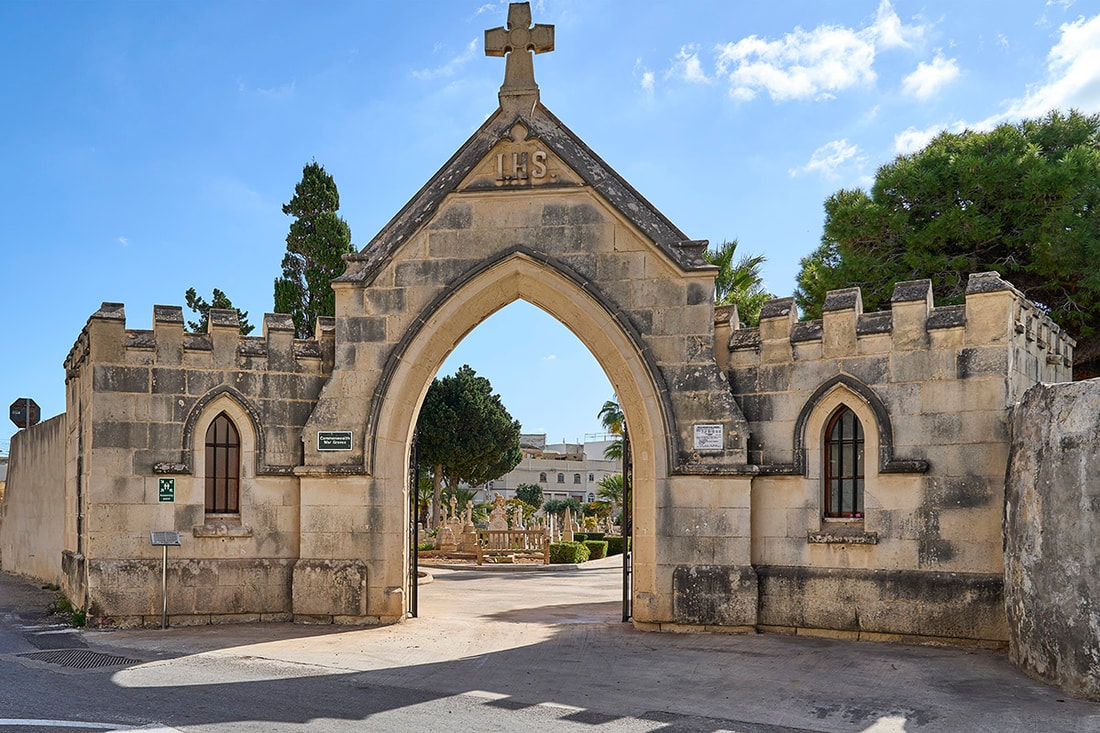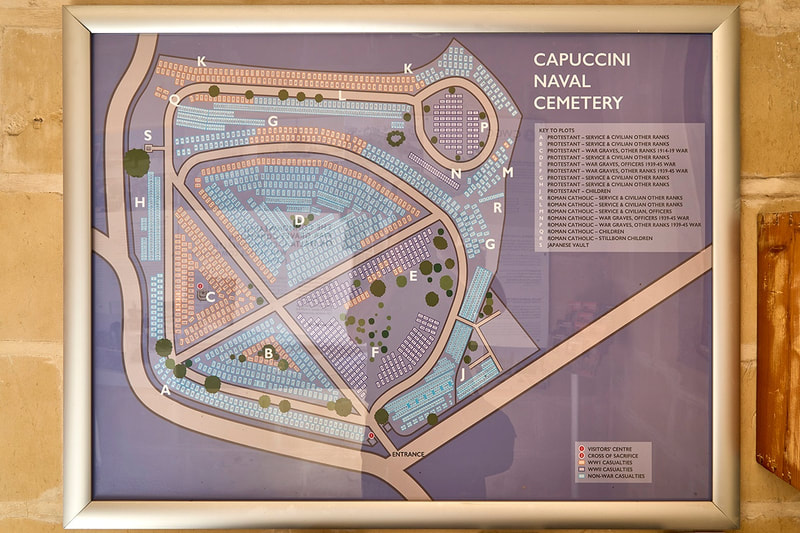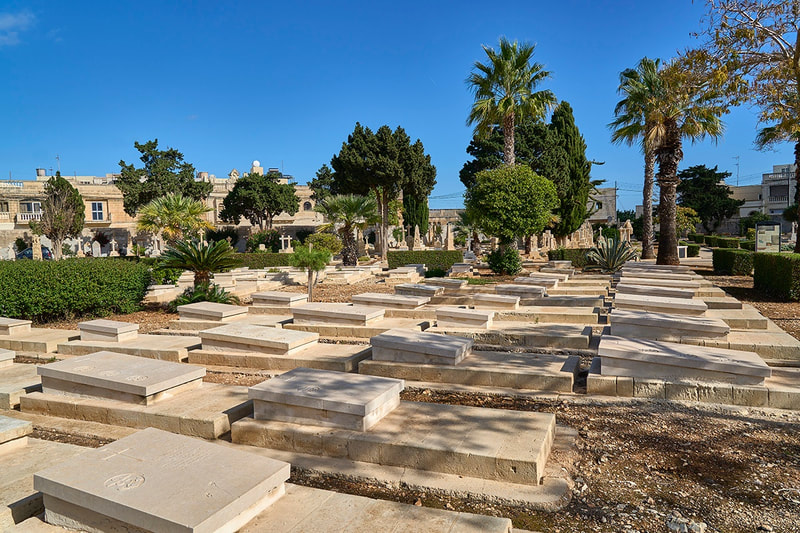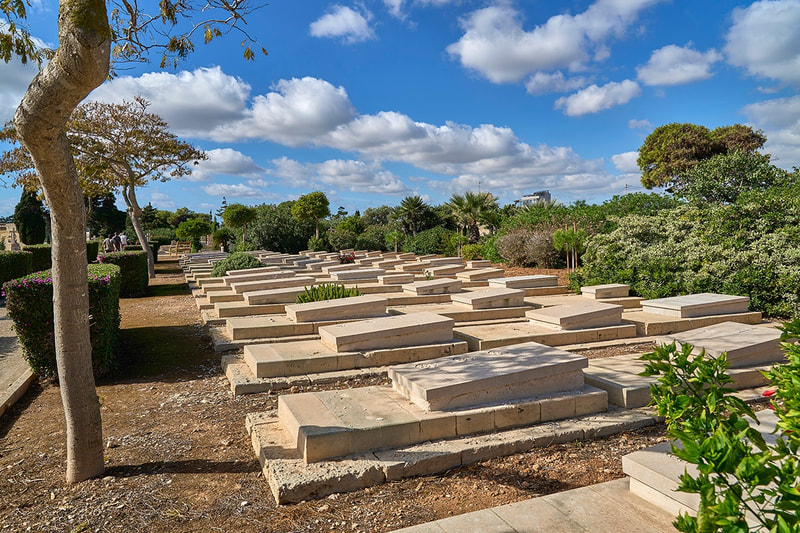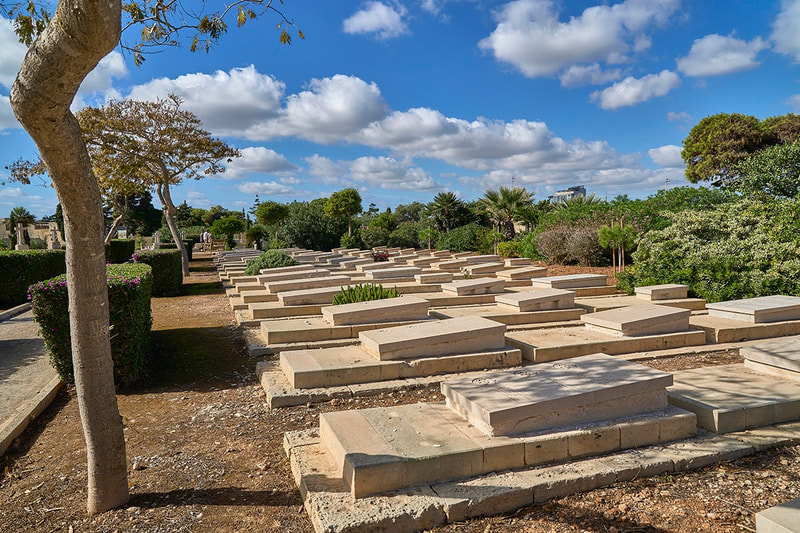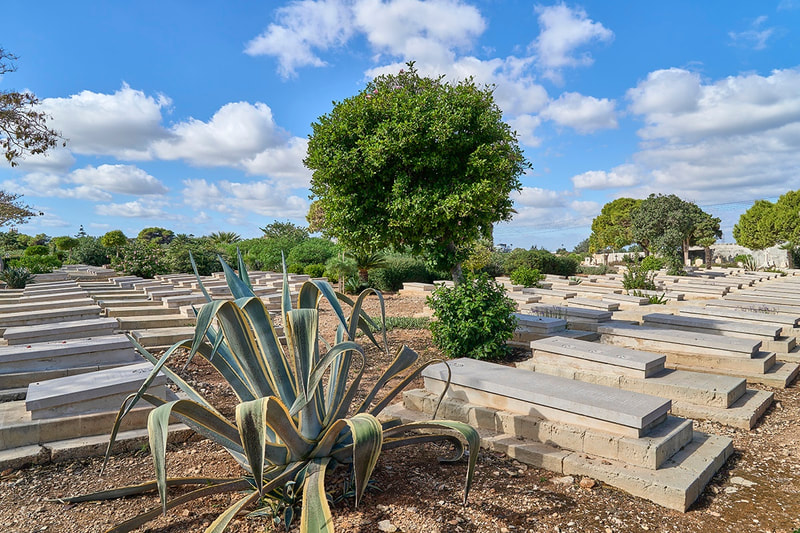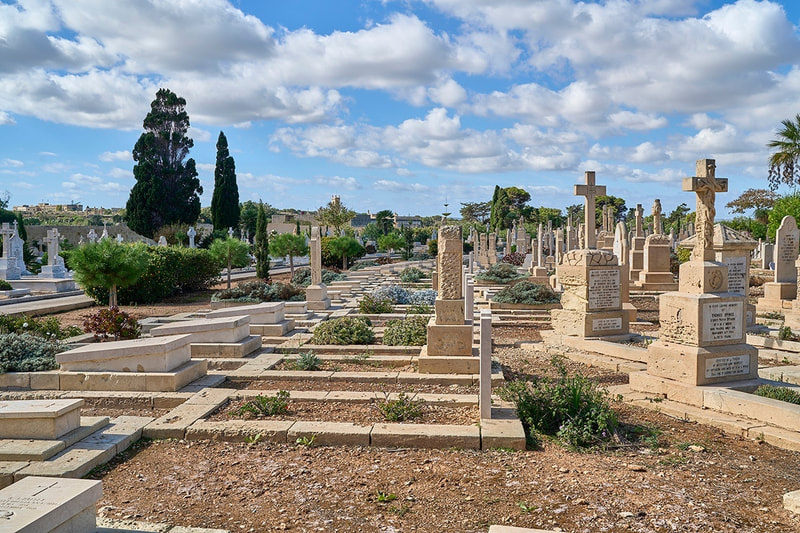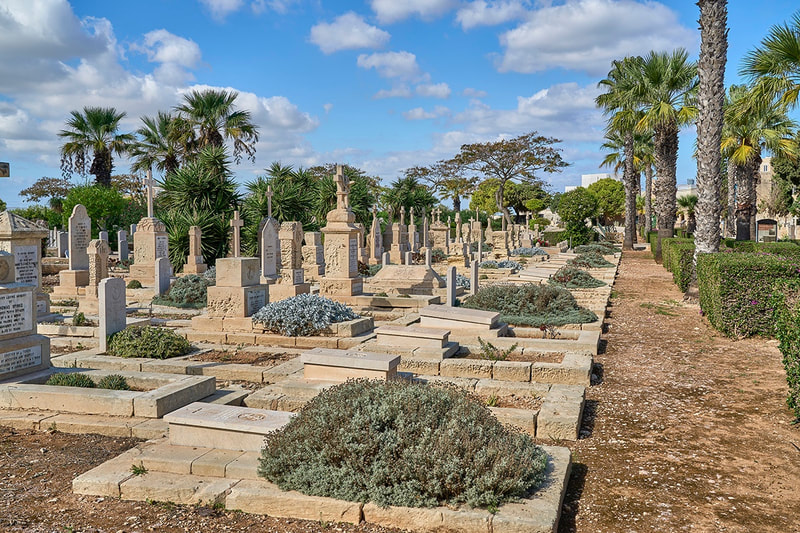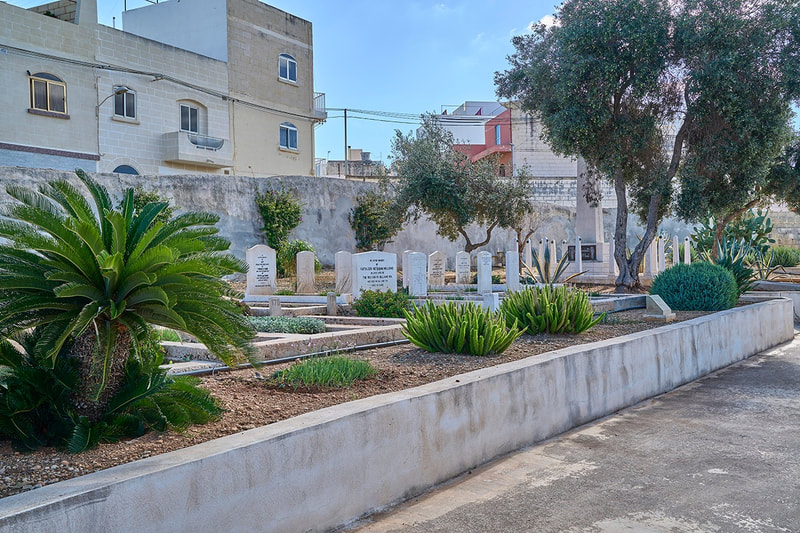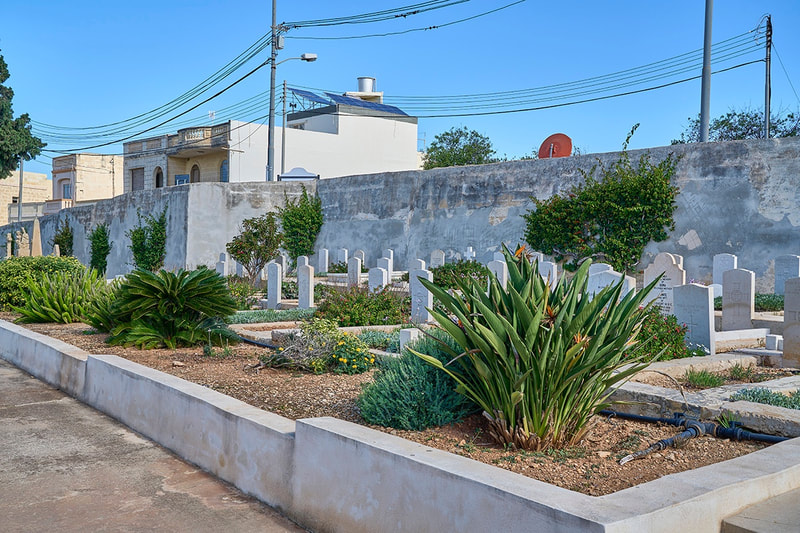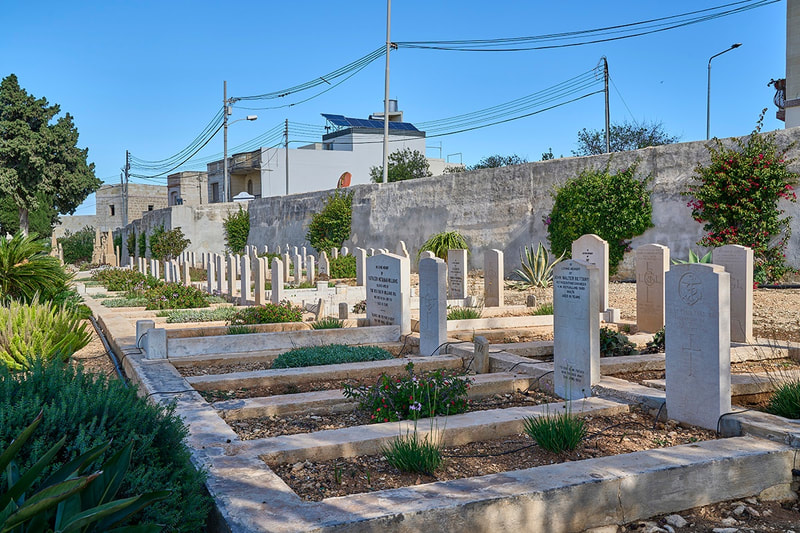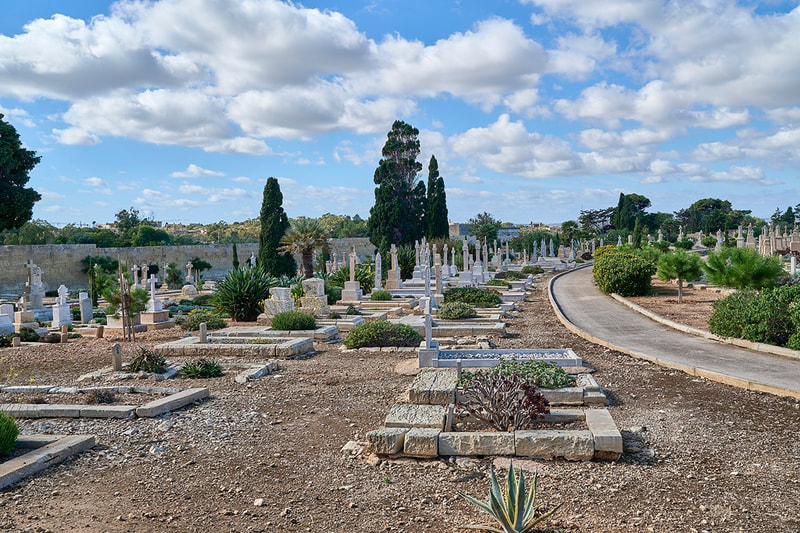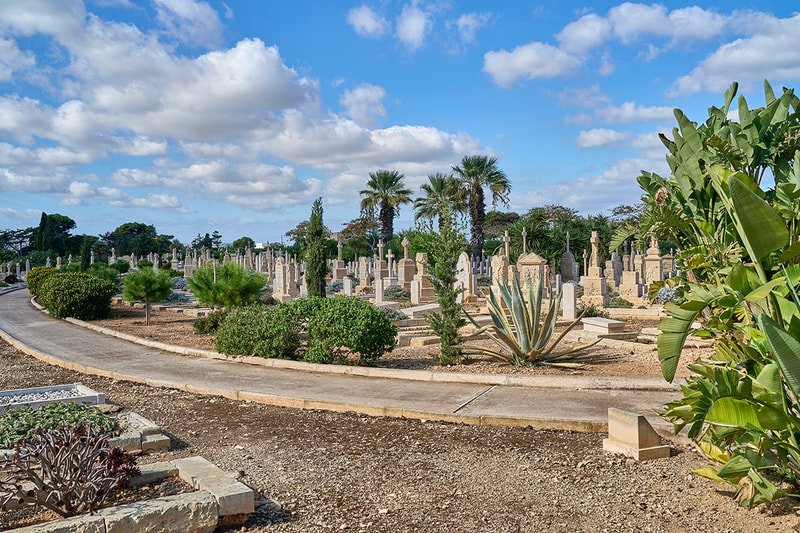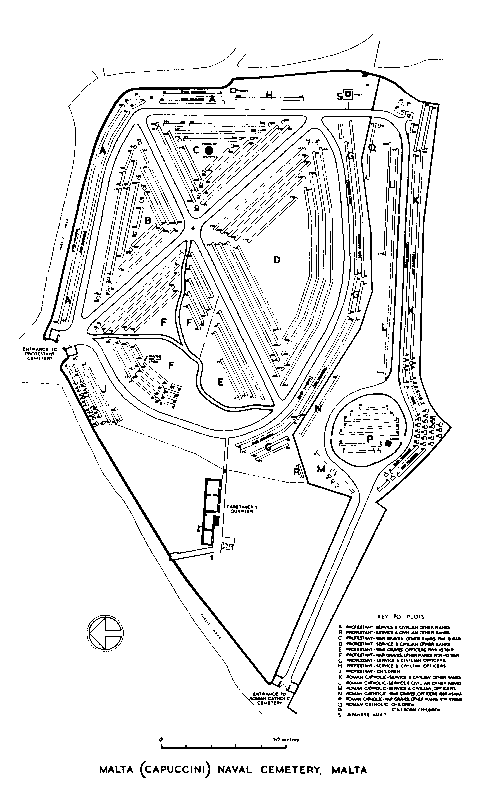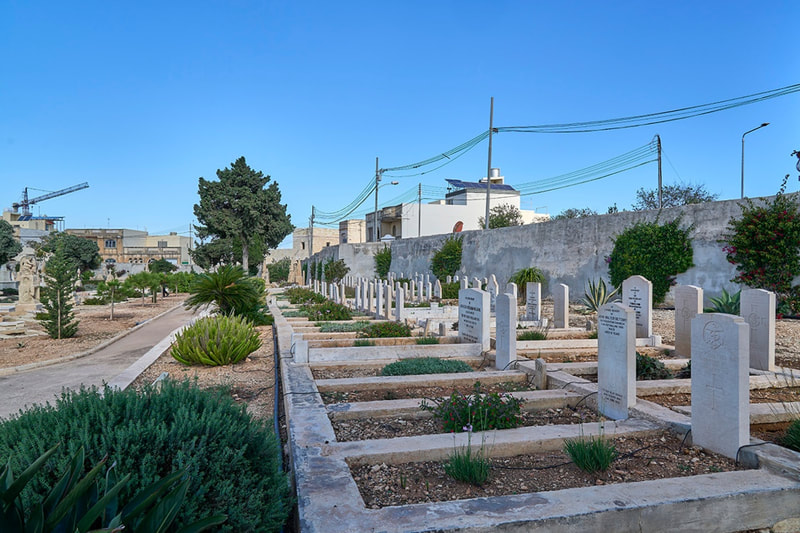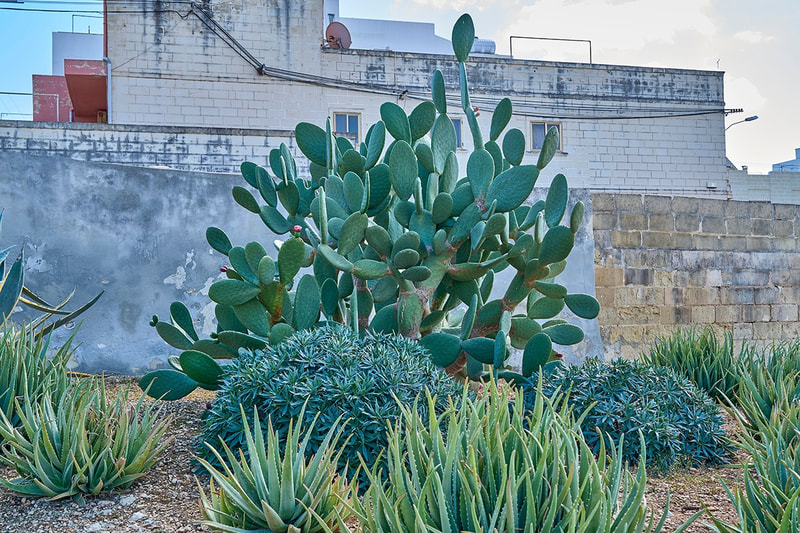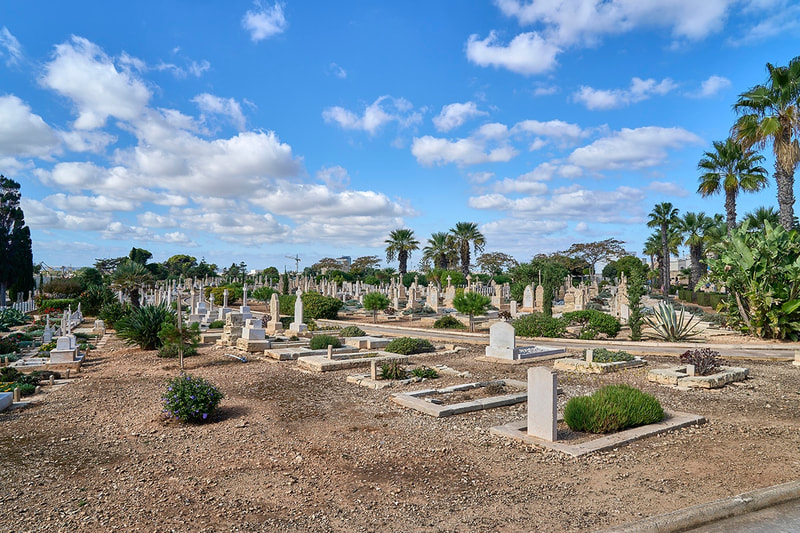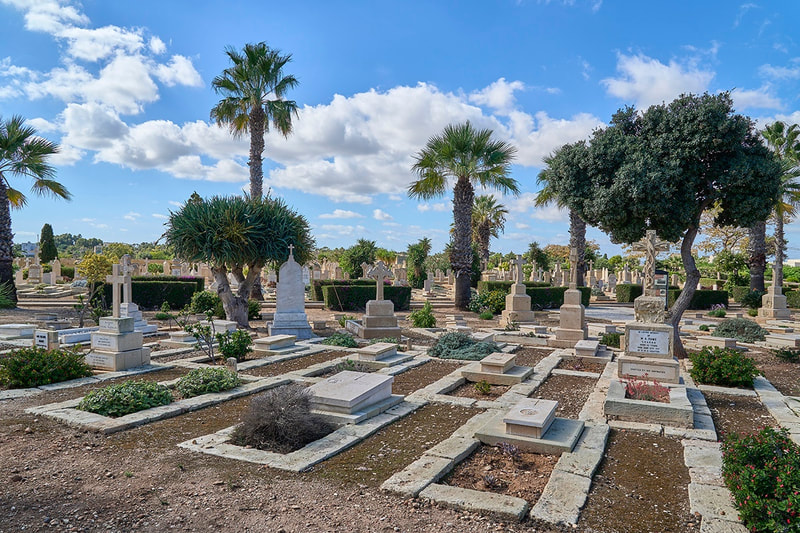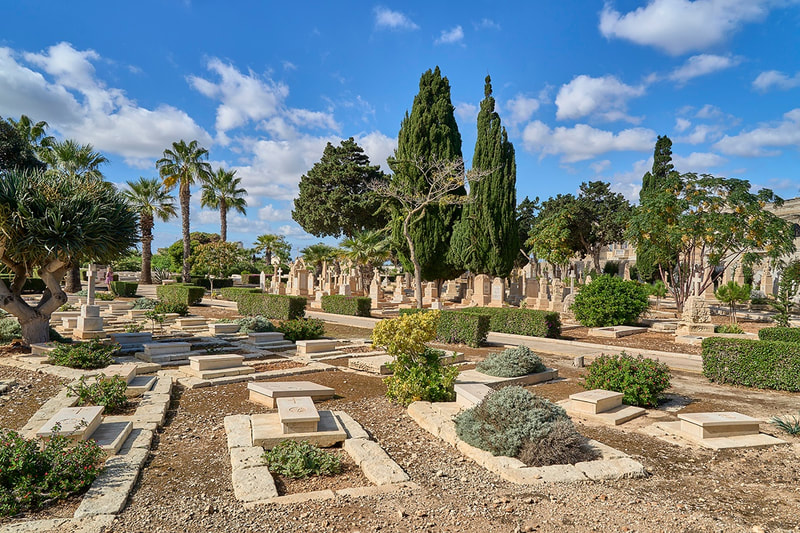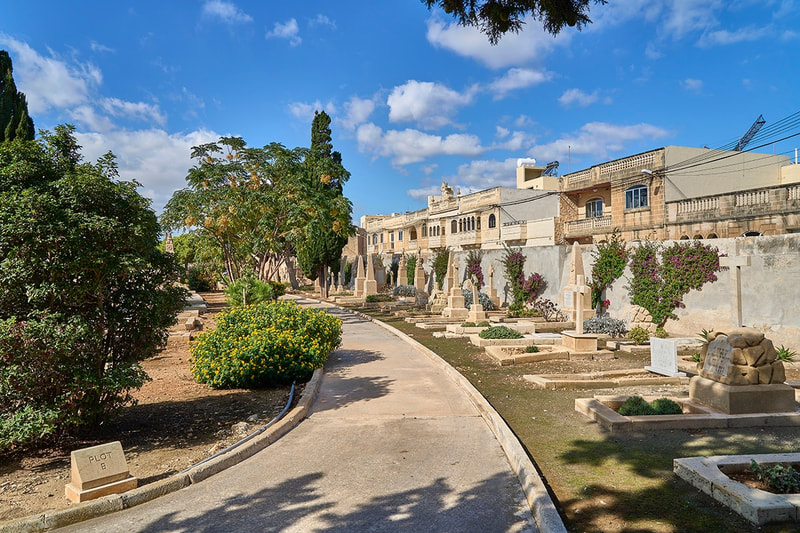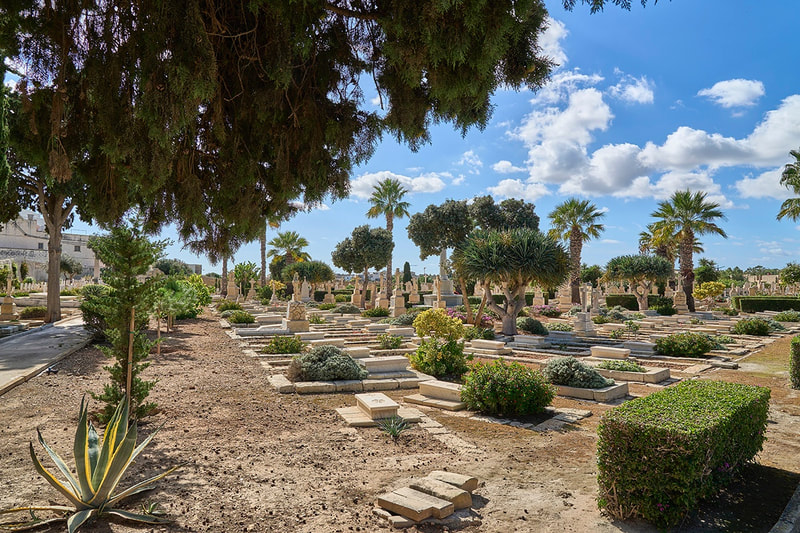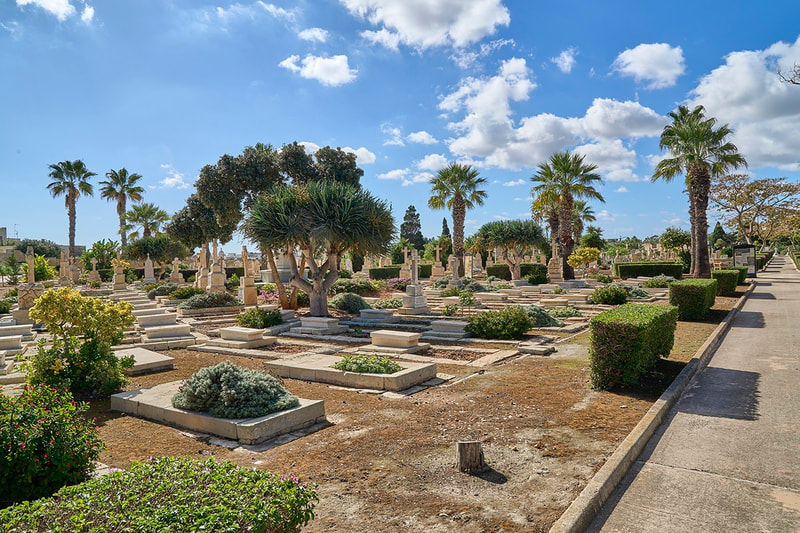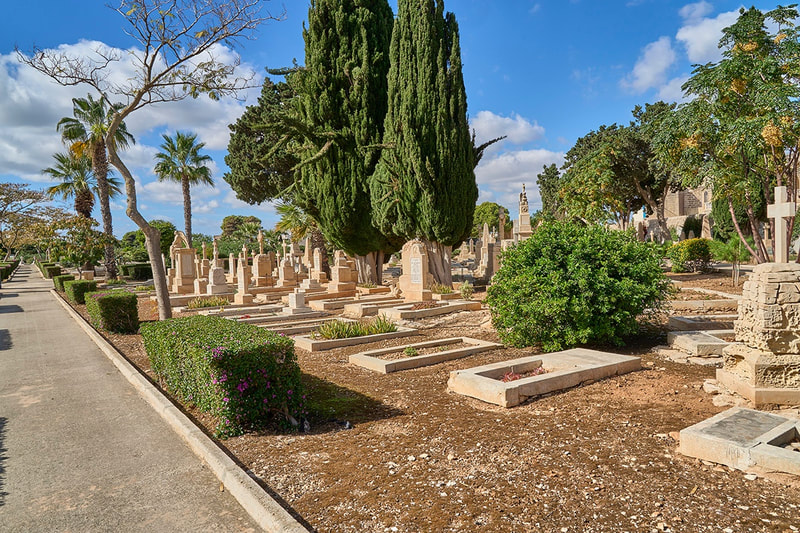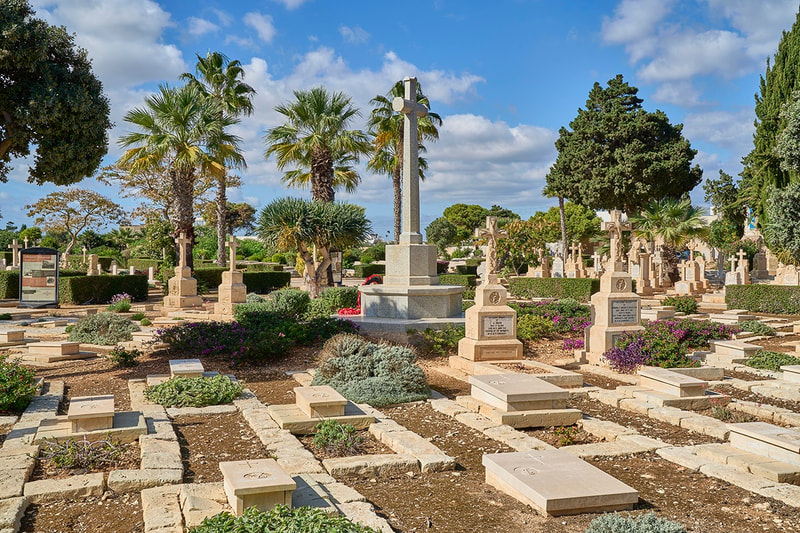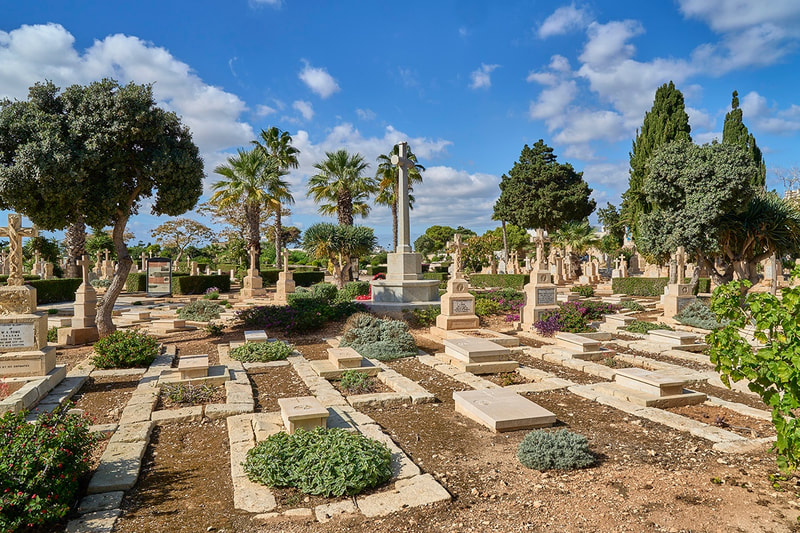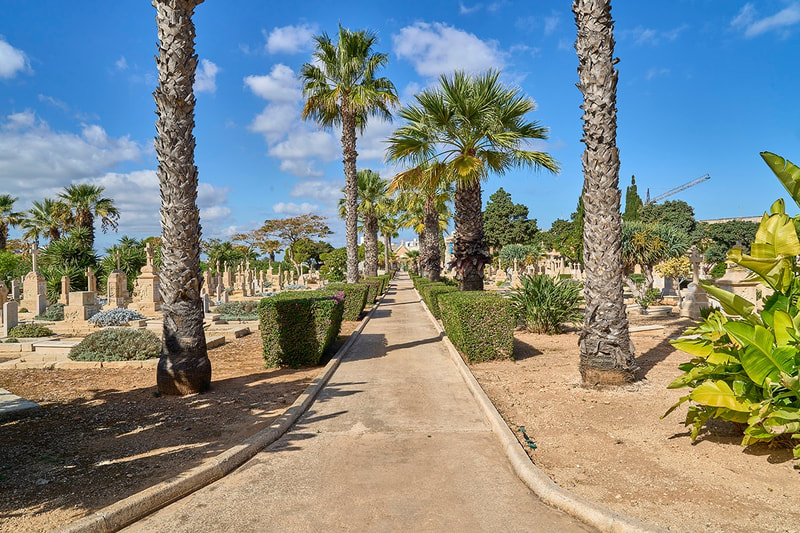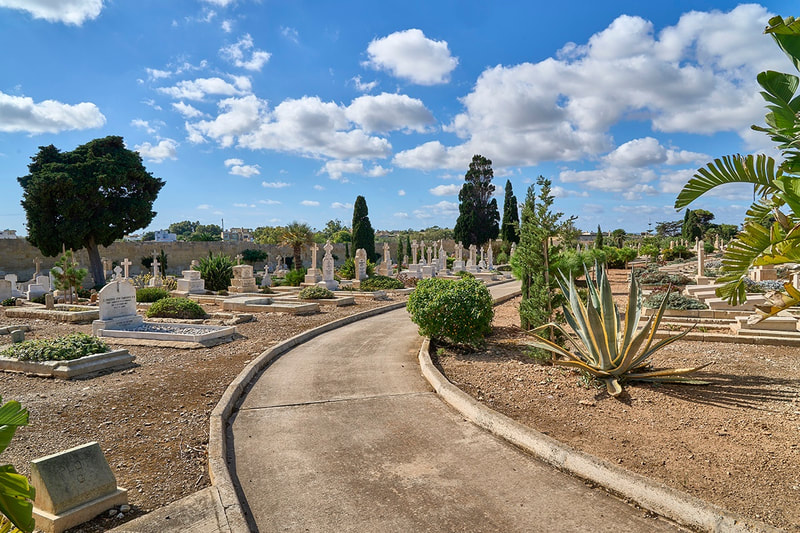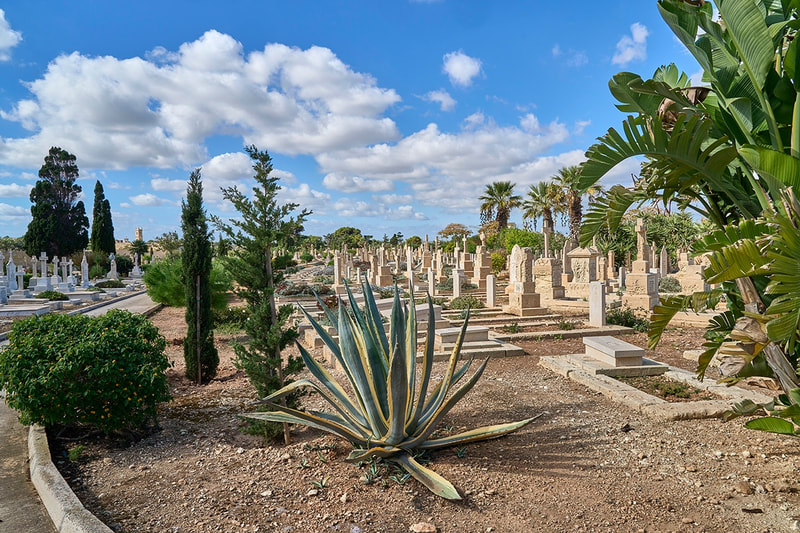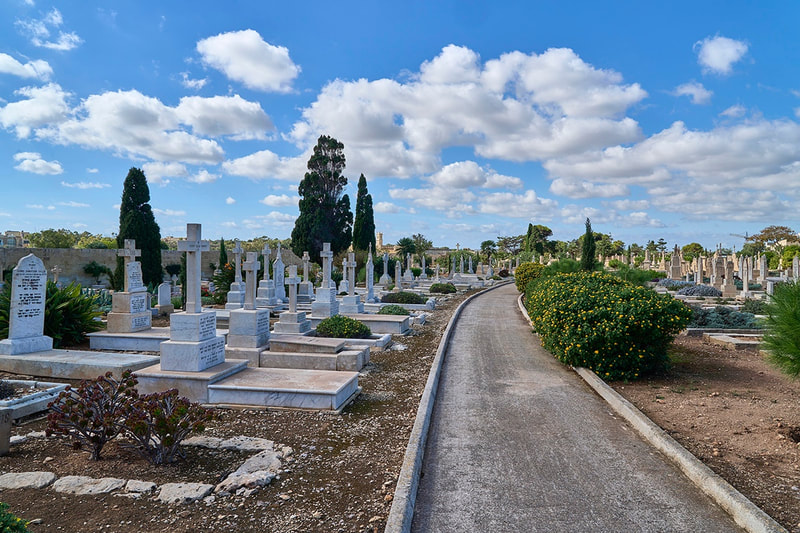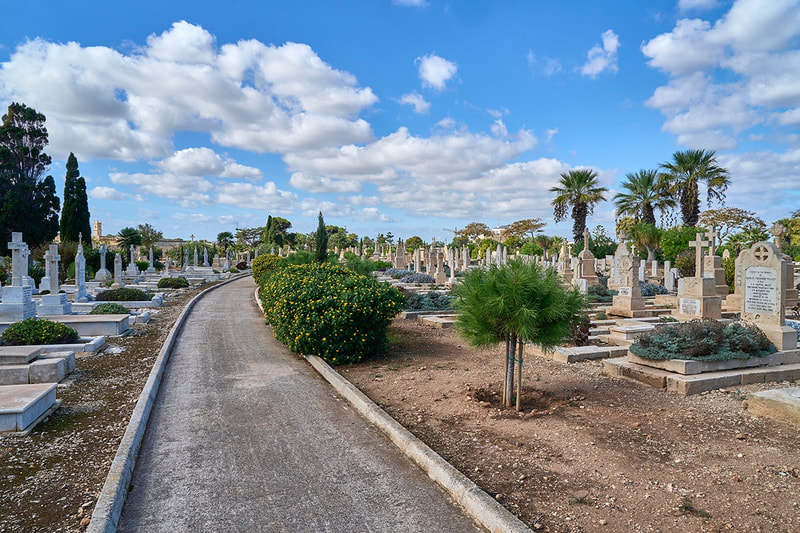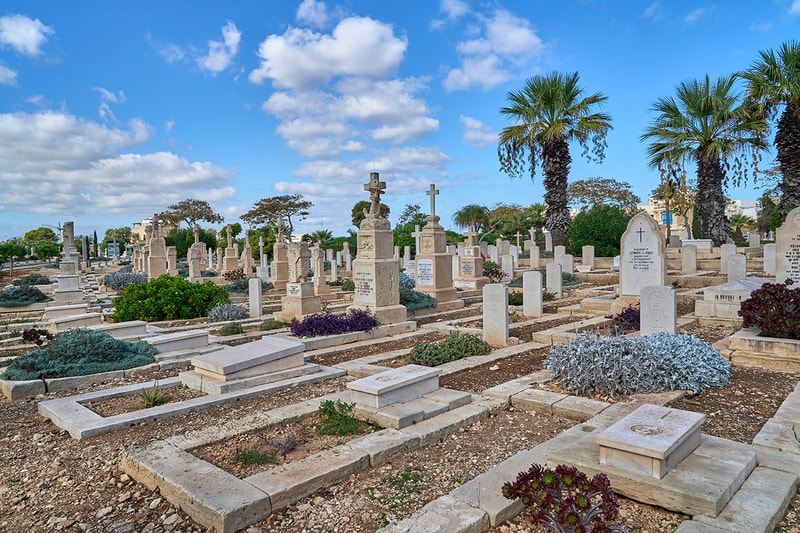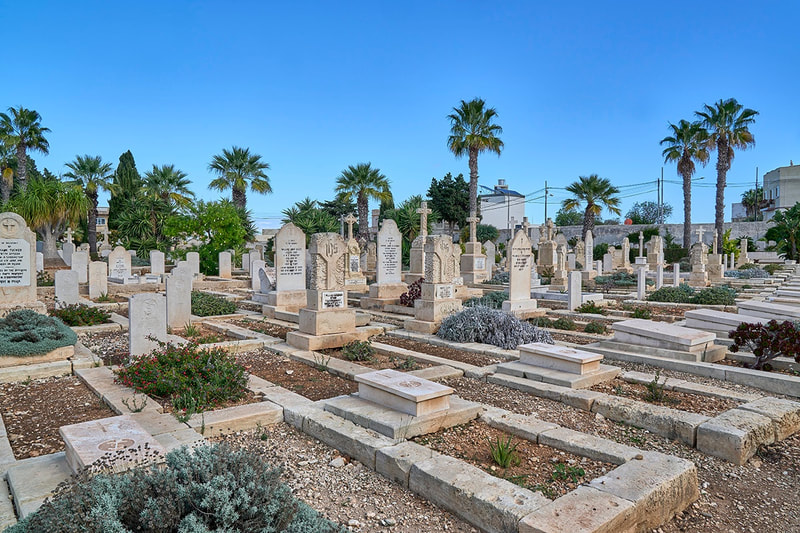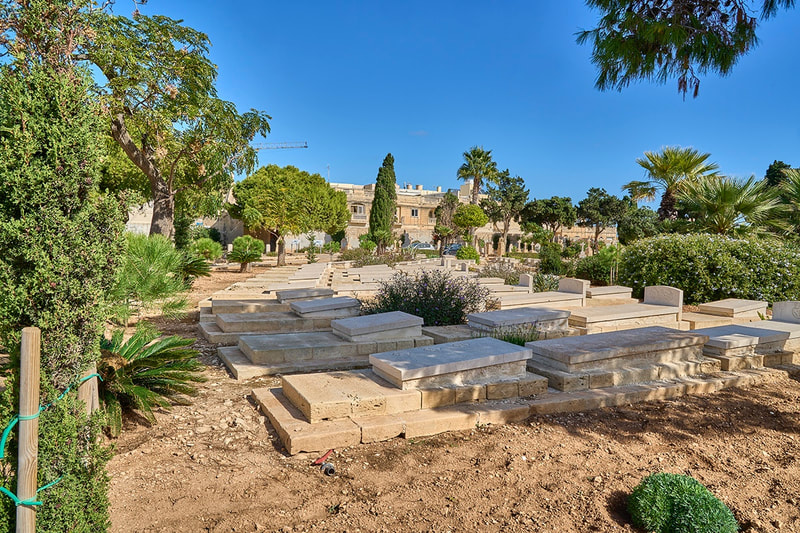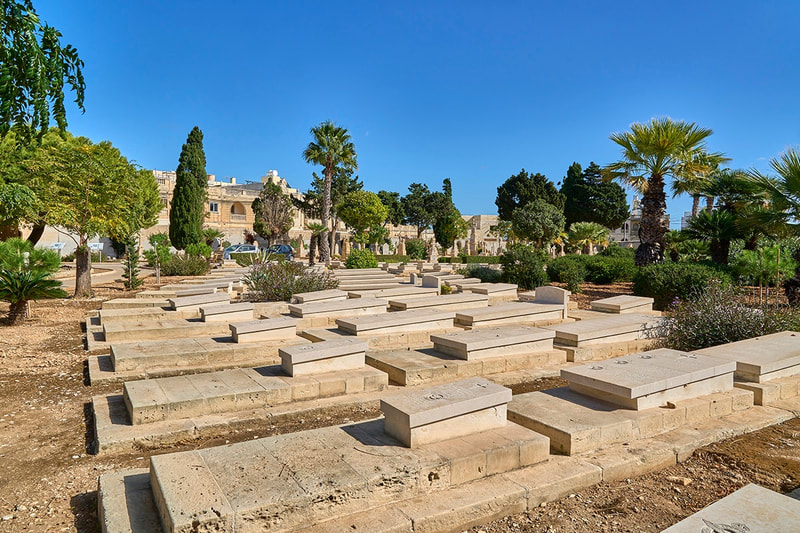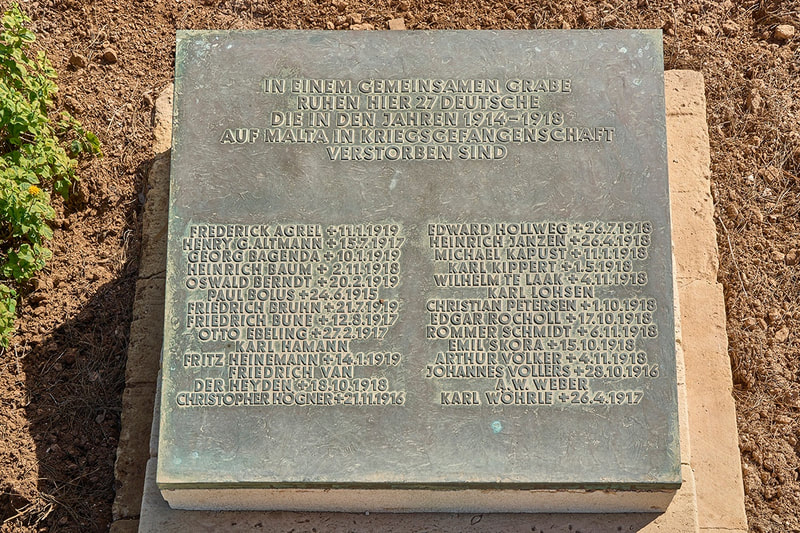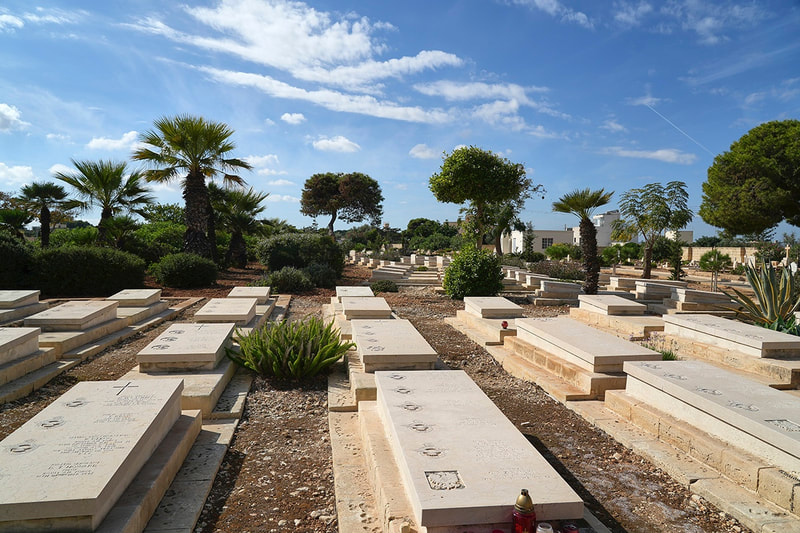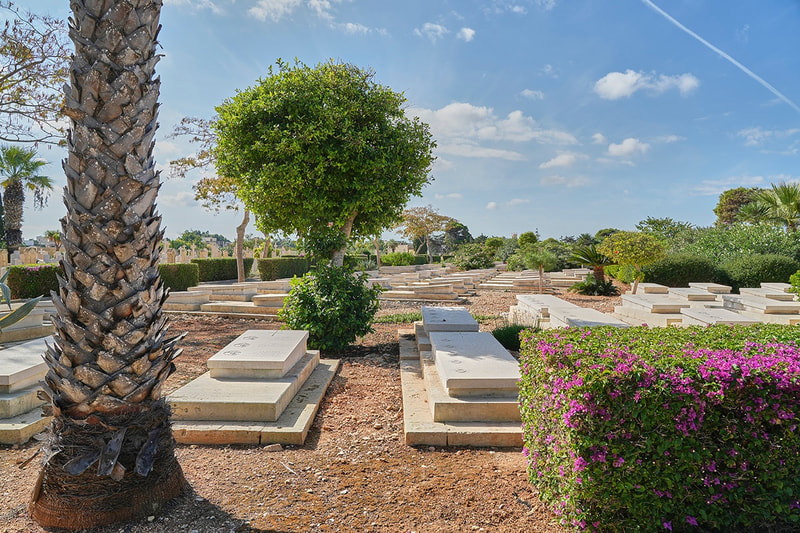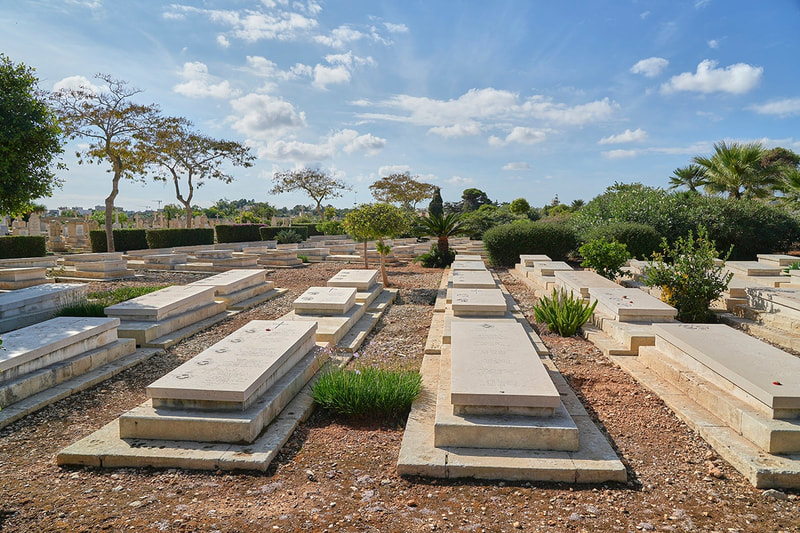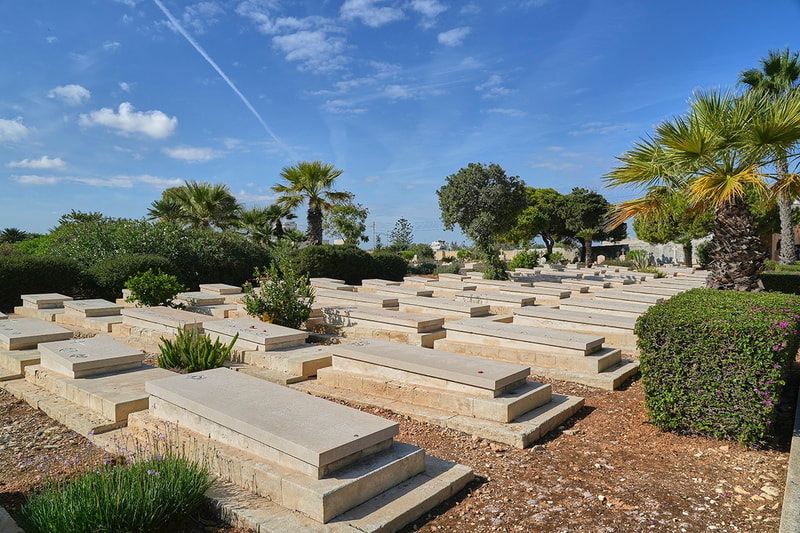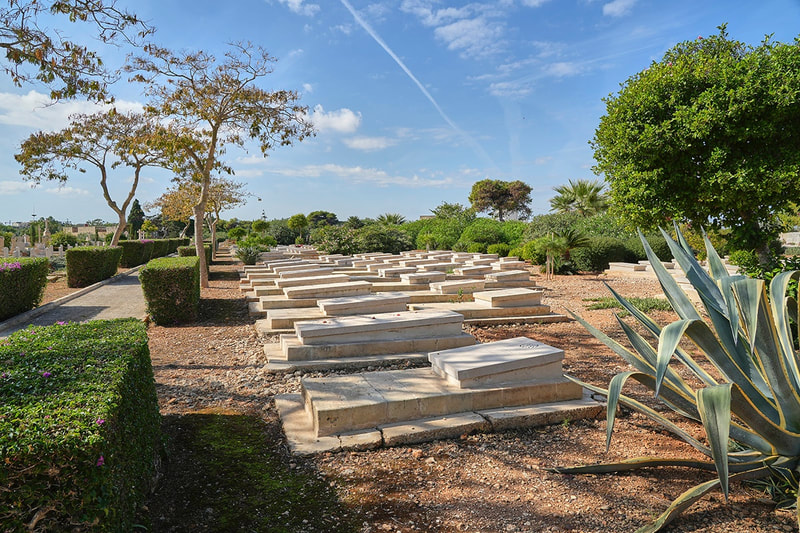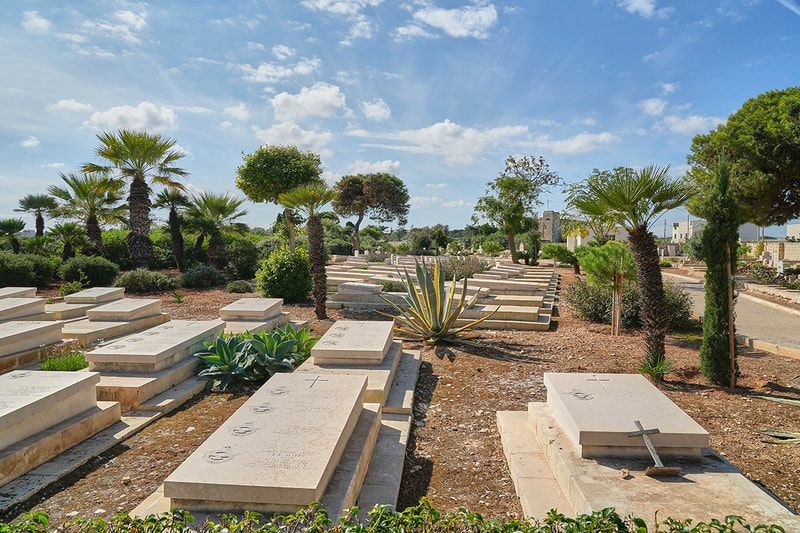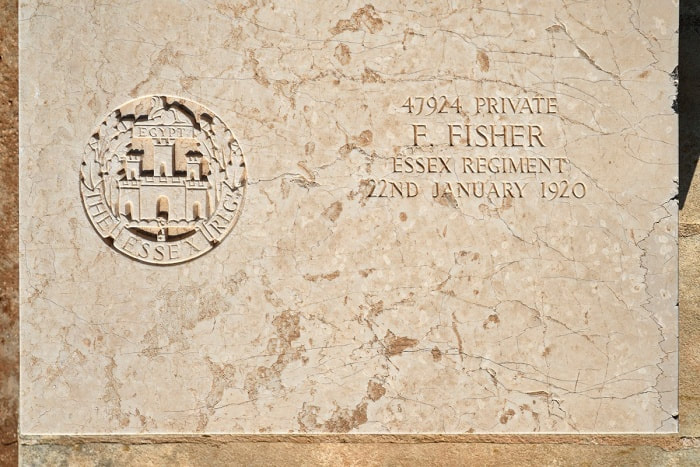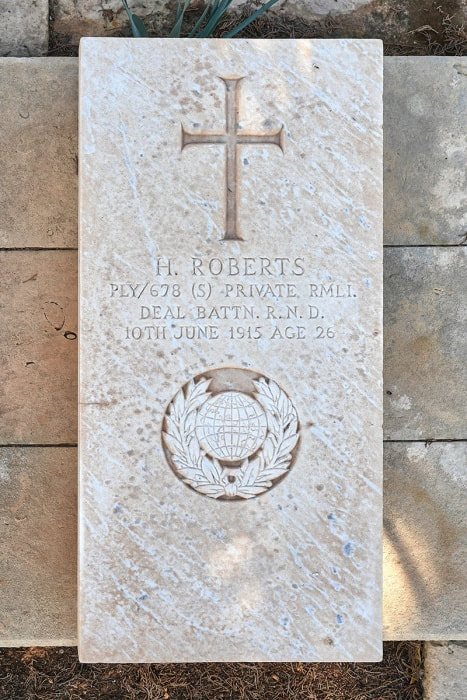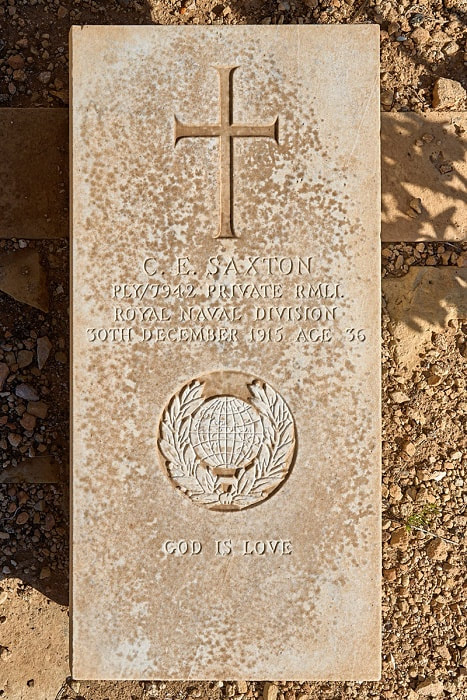MALTA (CAPUCCINI) NAVAL CEMETERY
Kalkara
Malta
GPS Coordinates: Latitude: 35.88777, Longitude: 14.53637
Location Information
The Cemetery is about 2 kilometres south-east of Rinella, a bay and hamlet opposite Valletta across the mouth of the Grand Harbour and on the southern outskirts of the village of Kalkara.
Just before entering Kalkara on the main bus route, the Cemetery is signposted along the road "Triq Santa Liberta" to the street of "Triq San Leonarda" and "Triq Santa Rokku" where the Cemetery is located. On 'Google Maps' this cemetery is indicated as Kalkara Military Cemetery.
Cemetery address: Triq Santa Rokku, Kalkara.
Visiting Information
Opening times:
The cemetery stays open Monday to Friday until dusk, and on weekends and public holidays 08.30 to dusk, but is only staffed at the following times:
April - June 06.30 - 16.30
July - September 06.30 - 13.00
October - March 07.00 - 16.00 (except Wednesdays 07.00 - 13.00)
NOTE: The earth is shallow on Malta and during both wars, many joint or collective burials were made as graves had to be cut into the underlying rock. During the Second World War, such work was particularly hazardous because of air raids. Most of these graves are marked by recumbent markers on which several inscriptions could be carved, and for the sake of uniformity, the same type of marker was used for single graves.
Historical Information
From the spring of 1915, the hospitals and convalescent depots established on the islands of Malta and Gozo dealt with over 135,000 sick and wounded, chiefly from the campaigns in Gallipoli and Salonika, although increased submarine activity in the Mediterranean meant that fewer hospital ships were sent to the island from May 1917.
During the Second World War, Malta's position in the Mediterranean was of enormous Allied strategic importance. Heavily fortified, the island was never invaded, but was subjected to continual bombardment and blockade between Italy's entry into the war in June 1940 and the Axis defeat at El Alamein in November 1942. At the height of Axis attempts to break Malta's resistance in April 1942, the island and her people were awarded the George Cross by King George VI.
Malta's defence relied upon a combined operation in which the contributions made by the three branches of the armed forces and Merchant Navy were equally crucial. Although heavily pressed in defence, offensive raids launched from the island by air and sea had a crippling effect on the Axis lines of communication with North Africa, and played a vital part in the eventual Allied success there.
Malta (Capuccini) Naval Cemetery, which once belonged to the Admiralty, is divided into two sections, Protestant and Roman Catholic. Most of the 351 Commonwealth burials of the First World War form a triangular plot in the Protestant section, the rest are scattered elsewhere. Among those buried in the cemetery are 44 men from HMS "Egmont", the Depot ship at Malta, and 22 who died when HMS "Russell" was sunk by a mine off Malta in April 1916.
Most of the 694 Commonwealth burials of the Second World War are also in the Protestant section in a plot near the entrance, but there is another group in the Roman Catholic section. The rest are scattered.
The Commission also cares for 1,445 non-war burials in the cemetery, and 137 war graves of other nationalities.
Total Burials: 2,656.
World War One Identified Casualties: United Kingdom 343, Germany 27, Australia 3, Greece 2, Bulgaria 1, Russia 1. Total 377.
World War Two Identified Casualties: United Kingdom 630, Canada 26, Australia 24, Poland 8, New Zealand 7, South Africa 6, Greece 3, Italy 3, India 1, Netherlands 1. Total 709.
The Cemetery is about 2 kilometres south-east of Rinella, a bay and hamlet opposite Valletta across the mouth of the Grand Harbour and on the southern outskirts of the village of Kalkara.
Just before entering Kalkara on the main bus route, the Cemetery is signposted along the road "Triq Santa Liberta" to the street of "Triq San Leonarda" and "Triq Santa Rokku" where the Cemetery is located. On 'Google Maps' this cemetery is indicated as Kalkara Military Cemetery.
Cemetery address: Triq Santa Rokku, Kalkara.
Visiting Information
Opening times:
The cemetery stays open Monday to Friday until dusk, and on weekends and public holidays 08.30 to dusk, but is only staffed at the following times:
April - June 06.30 - 16.30
July - September 06.30 - 13.00
October - March 07.00 - 16.00 (except Wednesdays 07.00 - 13.00)
NOTE: The earth is shallow on Malta and during both wars, many joint or collective burials were made as graves had to be cut into the underlying rock. During the Second World War, such work was particularly hazardous because of air raids. Most of these graves are marked by recumbent markers on which several inscriptions could be carved, and for the sake of uniformity, the same type of marker was used for single graves.
Historical Information
From the spring of 1915, the hospitals and convalescent depots established on the islands of Malta and Gozo dealt with over 135,000 sick and wounded, chiefly from the campaigns in Gallipoli and Salonika, although increased submarine activity in the Mediterranean meant that fewer hospital ships were sent to the island from May 1917.
During the Second World War, Malta's position in the Mediterranean was of enormous Allied strategic importance. Heavily fortified, the island was never invaded, but was subjected to continual bombardment and blockade between Italy's entry into the war in June 1940 and the Axis defeat at El Alamein in November 1942. At the height of Axis attempts to break Malta's resistance in April 1942, the island and her people were awarded the George Cross by King George VI.
Malta's defence relied upon a combined operation in which the contributions made by the three branches of the armed forces and Merchant Navy were equally crucial. Although heavily pressed in defence, offensive raids launched from the island by air and sea had a crippling effect on the Axis lines of communication with North Africa, and played a vital part in the eventual Allied success there.
Malta (Capuccini) Naval Cemetery, which once belonged to the Admiralty, is divided into two sections, Protestant and Roman Catholic. Most of the 351 Commonwealth burials of the First World War form a triangular plot in the Protestant section, the rest are scattered elsewhere. Among those buried in the cemetery are 44 men from HMS "Egmont", the Depot ship at Malta, and 22 who died when HMS "Russell" was sunk by a mine off Malta in April 1916.
Most of the 694 Commonwealth burials of the Second World War are also in the Protestant section in a plot near the entrance, but there is another group in the Roman Catholic section. The rest are scattered.
The Commission also cares for 1,445 non-war burials in the cemetery, and 137 war graves of other nationalities.
Total Burials: 2,656.
World War One Identified Casualties: United Kingdom 343, Germany 27, Australia 3, Greece 2, Bulgaria 1, Russia 1. Total 377.
World War Two Identified Casualties: United Kingdom 630, Canada 26, Australia 24, Poland 8, New Zealand 7, South Africa 6, Greece 3, Italy 3, India 1, Netherlands 1. Total 709.

